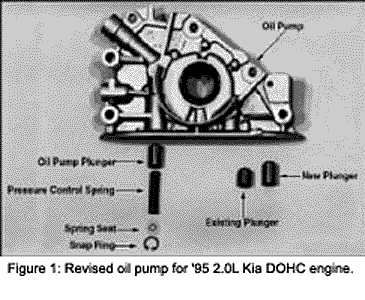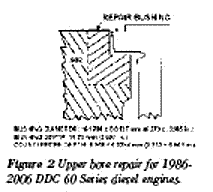Engine Builders: As engine technology advances to produce more efficient engines, motor oil must continue to meet the increasing demands for lubricating these precision-made engines. Development of the next specification of gasoline-fuel (GF) motor oil began only months after the latest specification, GF-4, became available in 2004.
The GF-5 motor oil specification created by the International Lubricant Standardization and Approval Committee (ILSAC) is scheduled to take effect in the summer of 2009 and will be the factory fill for 2010 model-year engines. GF-5 motor oils will be the most technologically advanced motor oil, exceeding the current GF-4 category in a number of important performance areas.
ILSAC identified several major areas that automakers would like to see improved with the GF-5 category. These areas include fuel economy and fuel economy retention throughout the oil drain, emission-control systems protection and increased sludge, deposit and oxidation control. In addition, ILSAC identified a number of other areas to be addressed by the GF-5 specification. These include low-temperature viscosity, high and low-temperature corrosion, turbocharger protection and filter clogging protection.
Aeration control, the reduction of tiny air bubbles, is a renewed concern because modern engines demand that oil serve as a hydraulic fluid in cam phaser devices, variable valve actuators, timing chain tensioners and hydraulic lash adjusters that allow for variable valve timing. These increased demands cause engine oils to be stressed more than ever before.
One of the highest priorities for automakers and engine oil manufacturers is making GF-5 motor oil backwards compatible. Developing engine oil that is compatible for new and older engines helps prevent misapplications.
(Provided by the makers of Pennzoil products.)
Engine Builders: The AERA Technical Committee offers the following information on a revised oil pump pressure relief valve for 1995 Kia 2.0L VIN 3 engines. This revised valve has been provided to reduce valve train noise/clattering complaints.
This bulletin provides information about changes to the Sportage DOHC 2.0L engine oil pump pressure relief plunger. Some 1995 Sportage DOHC engines experience excessive engine noise (“clatter”) from the hydraulic lash adjusters (HLA) during some normal engine operating temperature conditions. The excessive HLA “clatter” is caused by air leaking past the oil pump pressure relief plunger, which results in oil aeration causing excessive noise. When oil and air mix a spongy effect occurs, impeding the ability of the HLA to function properly.

The 1996 Sportage DOHC 2.0L engine oil pump has been modified to include a pressure relief plunger that is 7 mm longer than the existing plunger, which greatly reduces or eliminates the possibility of oil aeration (Figure 1).
The longer oil pump pressure relief plunger is interchangeable with the 1995 Sportage DOHC oil pump pressure relief plunger and may be installed to resolve customer concerns related to excessive HLA clatter. It is recommended that you use the revised components any time the 1995 oil pump is serviced (see Chart 1).
Engine Builders: The AERA Technical Committee offers the following information regarding cylinder head cracks on 1999-2004 Chrysler/Jeep 4.0L VIN S engines. Reports have been received about coolant loss on engines shortly after a valve job. After observing no visible signs of external coolant leakage, the cylinder head was removed for inspection.
After chemical cleaning, a magnetic particle inspection process was implemented on the suspect cylinder head. No positive indications were found. Additional testing was done by performing a submerged pressure test. The test revealed a slight leak between the rocker arm stands on the topside of the head. This head carries the casting number 0331.
After the head was removed and dried, the casting was again checked by magnetic inspection in the leaking area. No “real” cracks were found, only what was described as “false” impressions or a “rotten” looking casting. The area was repaired by spray welding and returned to service.
Engine Builders: The AERA Technical Committee offers the following information regarding an upper bore repair for 1986-2006 DDC 11.1, 12.7 and 14.0L 60 Series diesel engines. The repair offers extended block service and this operation may be performed on a single or multiple cylinder locations.

This repair was recently authorized by the Detroit Diesel Corporation (DDC) as it now offers an upper repair bushing (p/n 23525500). The repair requires boring of the damaged bores and pressing the insert into the block deck (Figure 2). DDC also offers specific tooling to perform this repair. Some engine builders report they’ve already been doing this type repair with fabricated bushings inserts. This bulletin applies only to the DDC repair bushing.
After the repair bushing has been inserted into the block, the sleeve counterbore must be machined into each installed bushing. Cut the counterbore ledge depth to .352″-.354″ (8.941-8.9991 mm) using the appropriate counterbore tooling.













